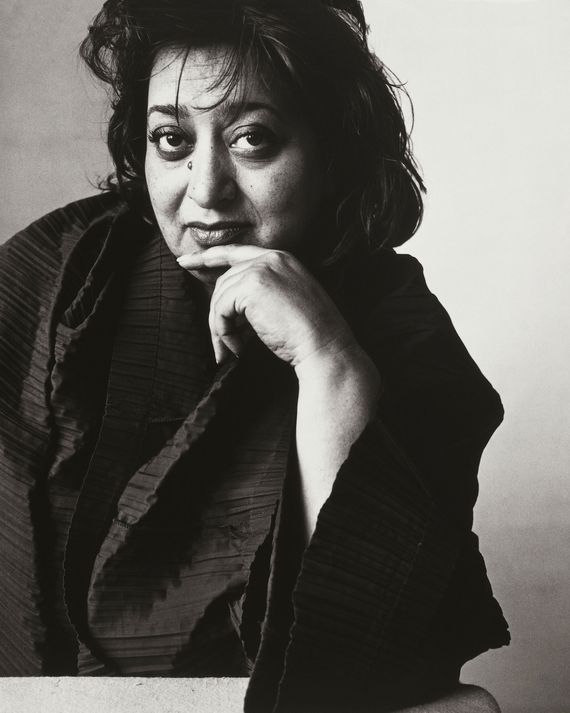
In early December, the news broke that Zaha Hadid Architects, a 500-person firm based in London that was founded (and until her death solely owned) by the Iraqi-British architect Zaha Hadid, had become a fully employee-owned company. “We can now reinvest all profits back into the business, into our people, equipment and facilities to the benefit of all our employees; allowing us to prioritize our work with visionary clients, communities and industry experts around the world to advance the quality of the built environment,” the studio said in an official statement. It sounds very appealing, but all we know for certain is there’s now an employee benefit trust, which means the company’s assets are collectively owned by the employees. What we don’t know is how this will impact decision-making, working conditions, benefits, and more.
The news came as a surprise to many. For a firm described by Architects’ Journal as having profits that “rocket” (the actual numbers were around $4.4 million in profit in 2021), the commitment to share the take among all employees seemed like an astonishingly progressive development. At the moment, the pay range is vast; according to Glassdoor, the starting salary is around $38,000, while Patrik Schumacher, the firm’s principal and “chairman for life of the Employee Benefit Trust,” was most recently paid about $860,000.
The announcement also arrived on the tail end of a year I’d spent trying to report on the firm without success. I wanted to write a profile of how an office that had thrived on a cult of personality more than your average architectural office had remained one of the top five global firms, even after its charismatic leader had died unexpectedly. And it had managed to do so with Schumacher — one of the most publicly difficult architecture-world people I had ever seen (and that’s saying a lot) — at the helm.
After all, what we know about Schumacher — besides his dedication to parametricism, his screeds against public space, and his enthusiastic turn toward crypto — includes a lawsuit he brought to gain full control of Hadid’s nearly $93 million fortune against its three other executors, all of whom had been by chosen by Hadid, including her niece. (His bid was ultimately rejected by the courts in November 2020). Was it possible, I asked the press office and a few other people I’d been introduced to, that someone would be able to explain all of this to me?
After months of deferrals from the press office — “They don’t care about press; they have so much work,” a publicist friend told me when I complained no one was getting back to me, which is unusual in the world of architecture PR — I interviewed a few leaders at ZHA and heard almost the same exact narrative from everyone. They all said they loved working at ZHA and claimed they had been shocked into personal grief by her death but stayed there in deference to her wishes. Hadid mentored the youngest colleagues, said associate director Melodie Leung. The firm’s director, Viviana Muscettola, said that when Hadid died, “We had lost our founder but also our mentor, so it was a big shock.” And Schumacher? No one really wanted to talk about him other than to say that whatever he posted on Facebook was obviously personal stuff having nothing to do with the firm and that they didn’t really know what was going on beyond that. “What you say privately stays private; it very much shouldn’t be treated as something that is a message from the practice,” Muscettola said.
The firm going employee-owned is apparently a change Hadid had spelled out in her will, and has been a long time coming. In April, Muscettola told me, “This is what Zaha wanted for the practice: to be owned as an employee benefit.” Shajay Bhooshan, who came to ZHA in 2007 and founded the firm’s computation and design-research department, also said in April that Hadid always “wished for the company to be converted into an employee benefit trust.” And where was Schumacher in all of this? “Patrik is working together with the other executors to secure these transitions now,” Muscettola said. This seemed to indicate Schumacher was trying to get sole control of the estate only to then give it up. So, wait, was he trying to seize everything in order to be … a good guy? Why was the press reporting that Schumacher was trying to wrest control if he was doing the opposite?
So, no clarity on Schumacher’s bid for sole executor status or his stance on this most recent announcement. Still, I wanted to understand more about the value of employee ownership from some of the many architecture firms that had gone this route. The famously employee-owned firm Gensler would not go into detail about its arrangements but shared an annual report that says it’s 100 percent employee-owned through direct shares and employee-stock programs. Thanks! I got Christian Giordano, the majority owner of New York and New Jersey–based firm Mancini Duffy, to describe how it became employee-owned. After he’d been working at Mancini for a few years, he asked the then-80-percent owner, Tony Schirripa, about a succession plan. Tony hinted that no one had offered a buyout; Giordano took the hint, did a valuation of the firm, got two other partners together, and bought the firm, paying Schirripa over five years. Since then, other employees have bought in or been given shares, increasing the number of owners, though Giordano is still the managing principal and will always own at least 51 percent — a hybrid take on employee ownership. When everyone has equal ownership, Giordano says, “It’s one of those things where everybody owns it, so nobody owns it. Practically speaking, he’s a fan of having to put your own money in. That said, he understands why a firm like Zaha Hadid might do better being employee-owned. “For that kind of firm, the superstar black-cape architecture firm, that might be the way to go — because in a sense you’re designing with Zaha Hadid and her sensibility always out front in everything you do, so maybe working as one voice, and then owning as one voice, might work for them.”
Ashton Hamm of the Architecture Lobby, a group that advocates for architectural workers, pointed out that “employee profit sharing is not the same as a cooperative as it offers no means for democratic worker control.”* For Hamm, there are many limits to a profit-sharing model alone since employees are not guaranteed a say in which projects a firm takes on, what the salaries are, and how many hours people are expected to work — all issues that tend to foment disagreement between management and staff.
ZHA declined to offer any more details about its profit-sharing program. I’m curious to see what happens in a year or five years. How many employees who are currently making the minimum salary will see the financial benefits of a 30-plus project portfolio? How many will have astonishing bonuses? Will decision-making actually change? Or was this a move done simply out of the desire to honor Hadid’s last wishes without making many changes after all? Because that’s the most common thread I gathered with everyone I talked to. Mostly, they wanted me to know Hadid would have wanted it to be like this. And maybe that’s what being employee-owned does, as Giordano hypothesized. Instead of concentrating all the Zaha at the top, it spreads her out. But until we understand exactly which employees own or control what, it remains to be seen if this is anything more than a dazzling image with nothing much behind it. Or as the Hustle Architect put it to me, “ZHA Has Given Us A Flashy Rendering Of What Practice Could Look Like. And I Look Forward To Seeing If They Can Make It A Reality.”
* Update 12/27/21: After publication of this article, the quote was corrected to attribute it to Ashton Hamm, not Maya Porath.





